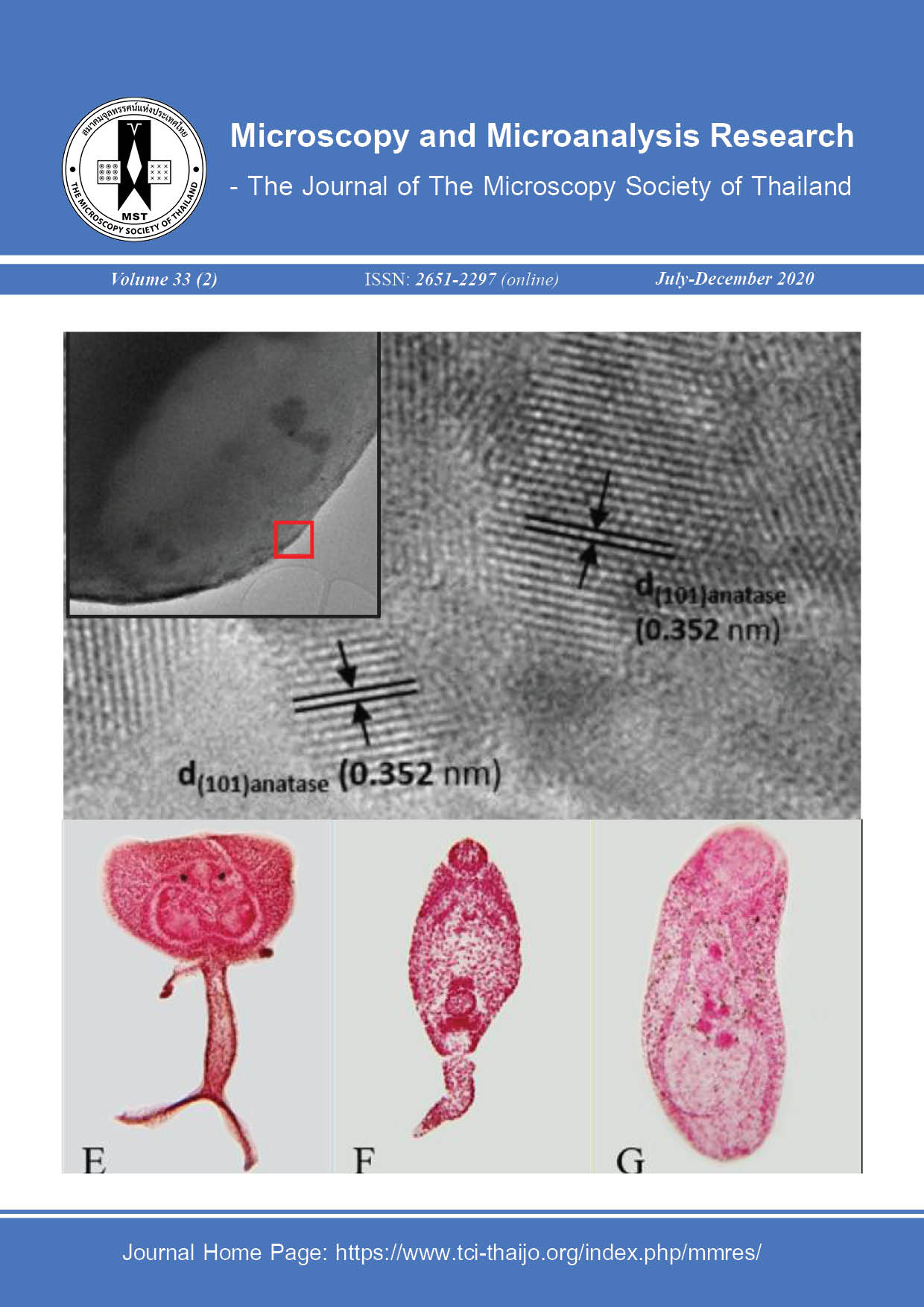Authenticity Screening for N95 Filtering Facepiece Respirator (FFR) by Field Emission Scanning Electron Microscope (FE-SEM) in Comparison with Particulate Filtration Efficiency (PFE) Analysis
Main Article Content
Abstract
Wearing face masks has become mandatory for many countries around the world as a mean to curb the spread of the SARS-CoV-2 virus transmission. During this difficult time the N95 FFR stock becomes an overnight commodity. The filtration efficiency of the mask is an important concern to protect medical professionals. By description, N95 filtering facepiece respirator (FFR) is a mask that is certified to filter over 95% of the particle size of 0.3 microns. Those numbers are considered to be able to filter out microorganisms and the majority of dust particles and air pollution. Counterfeited FFR’s flooded the market and put medical professionals at risk. As the filtration efficiency depends on the physical characteristics and chemical properties of respirator materials, the analysis of fiber topology should shed lights on how to screen counterfeited FFRs from genuine ones. In this study, fiber topology and physical appearances of each filter layer were revealed using low accelerating voltage FE-SEM analysis of four commercial N95 FFR models. The particulate filtration efficiency (PFE) test was operated as means to identify genuine FFRs. The investigation revealed that each layer of N95 FFRs was fabricated in different fiber sizes. The outer and inner layers were larger fibers and with added water repellant capability and the filter in the middle layer was fabricated with smaller fibers. Results from testing of filtration efficiency showed that each mask sample showed a filtration capacity ranging from 94-98% of 0.3 microns particles. Additionally, the SEM image library of authentic fiber images could be used to quickly screen counterfeited FFRs from genuine ones.
Article Details
References
Occupational Safety and Health Administration (OSHA). N.d. Appendix A to 1910.134 Fit Testing Procedures (Mandatory). United States Department of Labor.
Bradford S.P., Agostini G. and Mitchell J.C., A scoping review of surgical masks and N95 filtering facepiece respirators: Learning from the past to guide the future of dentistry, Safety Science, 131: 2020, 104920.
Rengasamy S., Shaffer R. and Williams B., A comparison of facemask and respirator filtration test Methods, Journal of Occupational and Environmental Hygiene, 14: 2017, 92-103.
Bar-on M.Y., Flamholz A. and Phillips R., SARS-CoV-2 (COVID-19) by the numbers, eLife, 9: 2020, e57309.
Silva, H.D., Cerqueira, M.Â. and Vicente, A.A., Nanoemulsions for food applications: development and characterization, Food Bioprocess Tech, 5: 2012, 854–867.
Oho T., Yamashita Y. and Shimazaki Y., Simple and rapid detection of Streptococcus mutans and Streptococcus sobrinus in human saliva by polymerase chain reaction, Oral Microbiol Immunol, 15: 200, 258-262.
Etheresia P., Influence of acceleration voltage on scanning electron microscopy of human blood platelets, Microscopy Research and Technique, 73(3): 2009, 225-8.
Ushiki, N., Fujitani, H., Aoi, Y. and Tsuneda, S., Isolation of Nitrospira belonging to sublineage II from a wastewater treatment plant, Microbes and Environments, 28: 2013, 346-353.
Institute of Medicine. Reusability of Facemasks During an Influenza Pandemic: Facing the Flu. Washington, DC: The National Academies Press, 2006.


